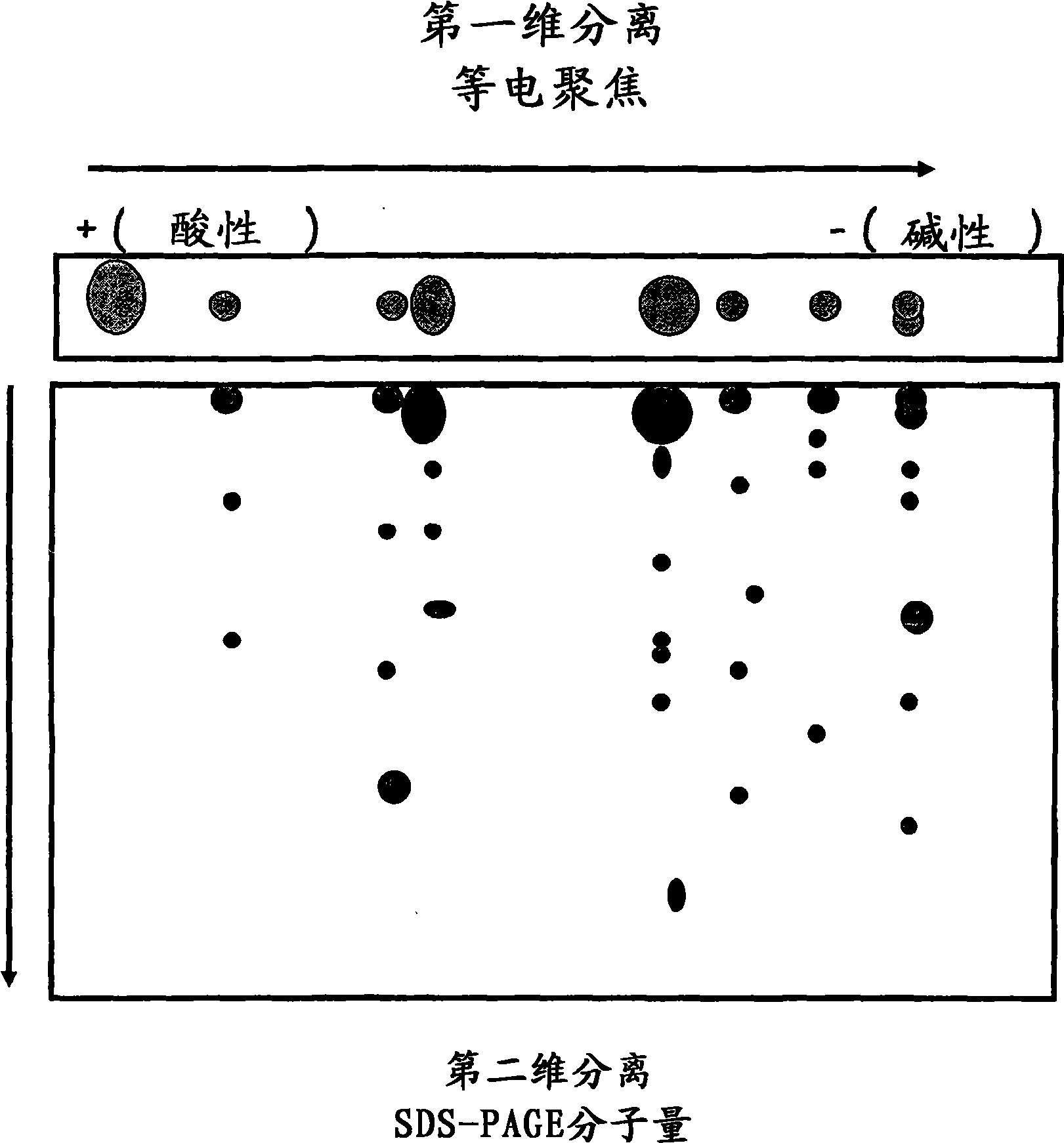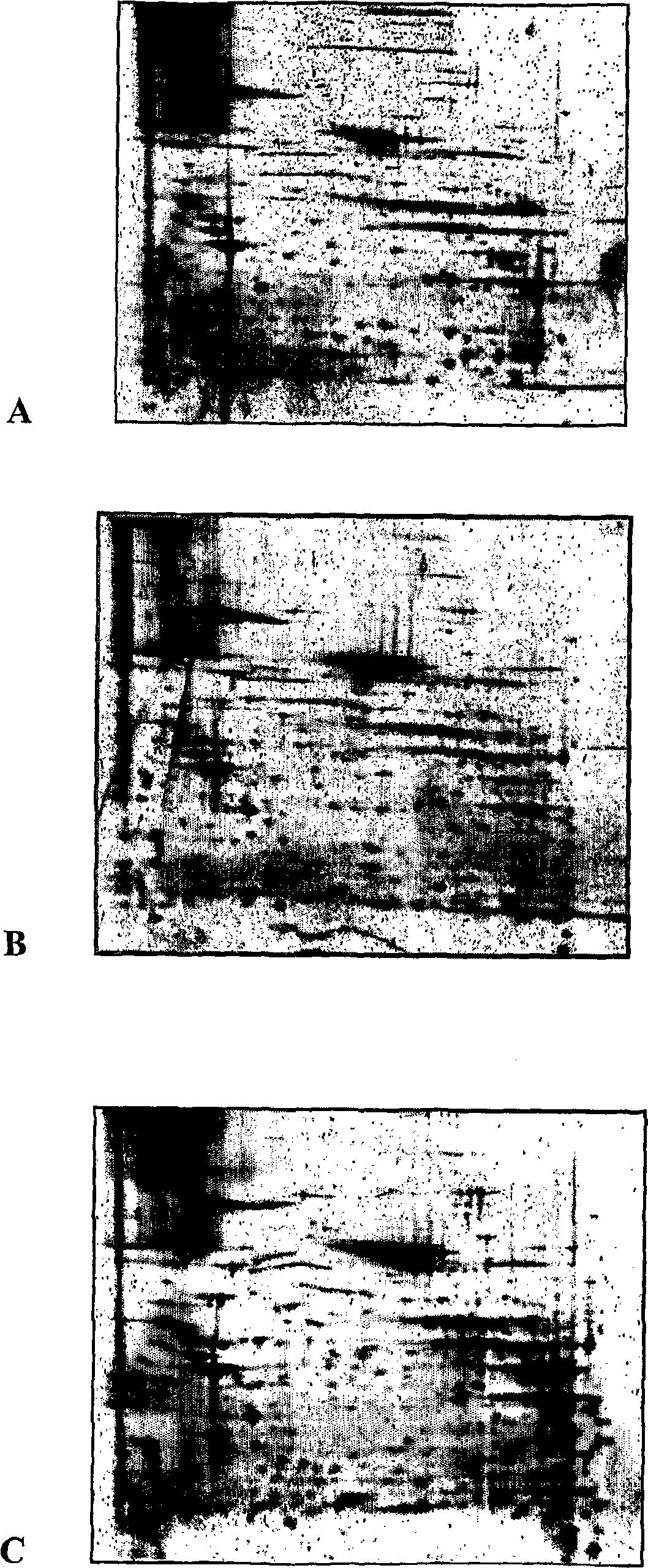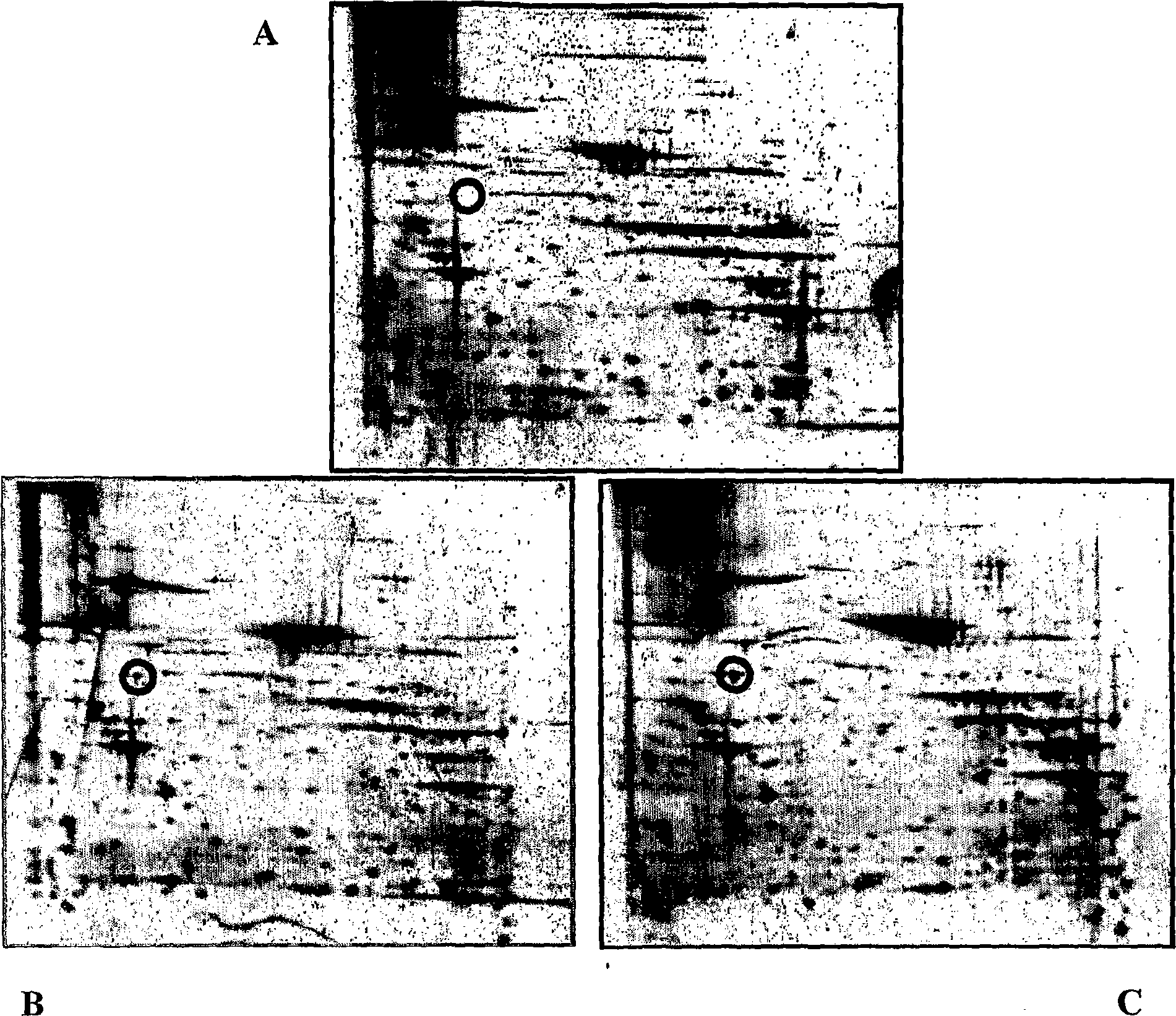Blood cell separation
A cell and fetal cell technology, applied in analytical materials, biomaterial analysis, material inspection products, etc., can solve problems such as changing the physiological characteristics of cells
- Summary
- Abstract
- Description
- Claims
- Application Information
AI Technical Summary
Problems solved by technology
Method used
Image
Examples
Embodiment Construction
[0072] Heat shock protein 60 is identified as fetal cell surface specific
[0073] By comparing the proteins expressed in fetal erythroid cell membranes and adult erythrocyte membranes, HSP-60 was identified as specific to the fetal erythroid cell surface.
[0074] Specifically, a red blood cell ghost film prepared and stored at -80°C is used. After optimizing the membrane dissolution protocol, it was found that a mixture of detergents ASB-14 and CHAPS at concentrations of 0.4% and 1.2%, respectively, produced the best results. In each two-dimensional electrophoresis experiment, 25 μg of dissolved membrane was used. Focusing is achieved by using a fixed pH gradient and is enhanced by adding ampholytes (mixtures of amphiphiles with various pI values) to the sample loading buffer. The protein is loaded onto the anode, and a current is applied to the gel strip. When the proteins move to the cathode, they are fixed at a position where their net electricity is zero, which is their isoe...
PUM
 Login to View More
Login to View More Abstract
Description
Claims
Application Information
 Login to View More
Login to View More - R&D
- Intellectual Property
- Life Sciences
- Materials
- Tech Scout
- Unparalleled Data Quality
- Higher Quality Content
- 60% Fewer Hallucinations
Browse by: Latest US Patents, China's latest patents, Technical Efficacy Thesaurus, Application Domain, Technology Topic, Popular Technical Reports.
© 2025 PatSnap. All rights reserved.Legal|Privacy policy|Modern Slavery Act Transparency Statement|Sitemap|About US| Contact US: help@patsnap.com



